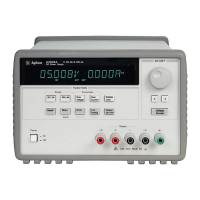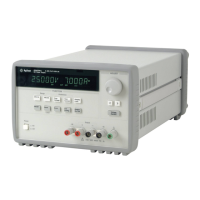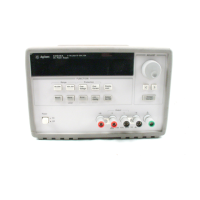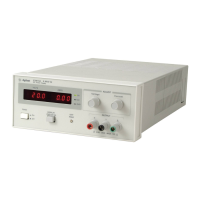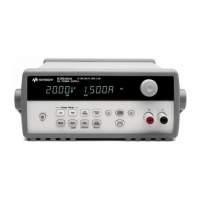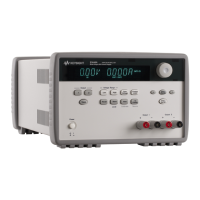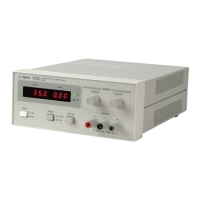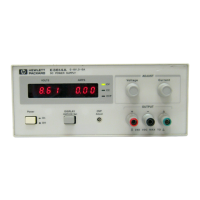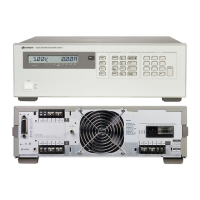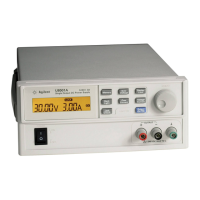Chapter 4 Remote Interface Reference
Triggering Commands
82
• You can also trigger the power supply from the GPIB interface by sending the
IEEE-488 Group Execute Trigger (GET) message. The following statement shows
how to send a GET from a Agilent Technologies controller.
TRIGGER 705 (group execute trigger)
• To ensure synchronization when the bus source is selected, send the *WAI (wait)
command. When the *WAI command is executed, the power supply waits for all
pending operations to complete before executing any additional commands. For
example, the following command string guarantees that the first trigger is accepted
and is executed before the second trigger is recognized.
TRIG:SOUR BUS;*TRG;*WAI;*TRG;*WAI
• You can use the *OPC? (operation complete query) command or the *OPC
(operation complete) command to signal when the operation is complete. The
*OPC? command returns “1” to the output buffer when the operation is complete.
The *OPC command sets the “OPC” bit (bit 0) in the Standard Event register when
the operation is complete.
Immediate Triggering
• To select the immediate trigger source, send the following command.
TRIGger:SOURce IMM
•When the IMMediate is selected as a trigger source, an INITiate command
immediately transfers the VOLTage:TRIGgered[:AMPLitude] and
CURRent:TRIGgered[:AMPLitude]values to
VOLTage[:LEVel][:IMMediate][:AMPLitude] and CURRent
[:LEVel][:IMMediate][:AMPLitude]values. Any delay is ignored.
